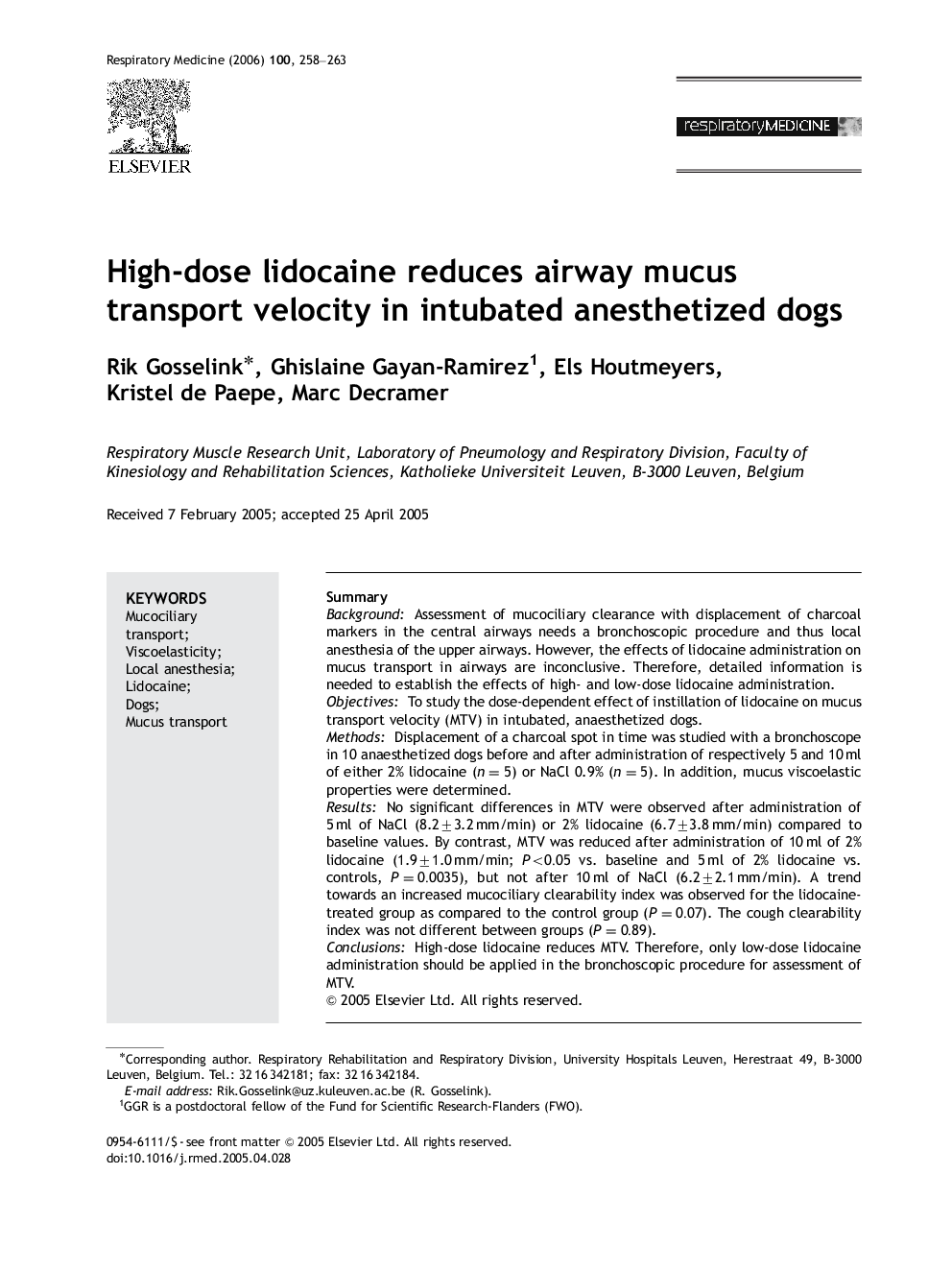| Article ID | Journal | Published Year | Pages | File Type |
|---|---|---|---|---|
| 4212179 | Respiratory Medicine | 2006 | 6 Pages |
SummaryBackgroundAssessment of mucociliary clearance with displacement of charcoal markers in the central airways needs a bronchoscopic procedure and thus local anesthesia of the upper airways. However, the effects of lidocaine administration on mucus transport in airways are inconclusive. Therefore, detailed information is needed to establish the effects of high- and low-dose lidocaine administration.ObjectivesTo study the dose-dependent effect of instillation of lidocaine on mucus transport velocity (MTV) in intubated, anaesthetized dogs.MethodsDisplacement of a charcoal spot in time was studied with a bronchoscope in 10 anaesthetized dogs before and after administration of respectively 5 and 10 ml of either 2% lidocaine (n=5n=5) or NaCl 0.9% (n=5n=5). In addition, mucus viscoelastic properties were determined.ResultsNo significant differences in MTV were observed after administration of 5 ml of NaCl (8.2±3.2 mm/min) or 2% lidocaine (6.7±3.8 mm/min) compared to baseline values. By contrast, MTV was reduced after administration of 10 ml of 2% lidocaine (1.9±1.0 mm/min; P<0.05P<0.05 vs. baseline and 5 ml of 2% lidocaine vs. controls, P=0.0035P=0.0035), but not after 10 ml of NaCl (6.2±2.1 mm/min). A trend towards an increased mucociliary clearability index was observed for the lidocaine-treated group as compared to the control group (P=0.07P=0.07). The cough clearability index was not different between groups (P=0.89P=0.89).ConclusionsHigh-dose lidocaine reduces MTV. Therefore, only low-dose lidocaine administration should be applied in the bronchoscopic procedure for assessment of MTV.
